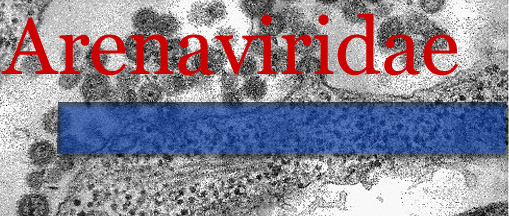Researchers at the Scripps Research Insitute have found that mice vaccinated with DNA encoding Lassa viral nucleoprotein
have developed cell-mediated immunological protection to two arenaviruses, lymphocytic choriomeningitis virus and Pichinde
virus. The DNA, delivered through a Vaccinia vector, triggered CD8+ T cell-mediated protection against future challenge.
Rodriguez-Carreno M. et al. Evaluating the immunogenicity and protective efficacy of a DNA vaccine encoding Lassa virus
nucleoprotein. Virology. 25 April 2005; 335(1): 87-98.
RNAi Inhibits Multiplication of Lymphocytic Choriomeningitis
Virus
Again at the Scripps Research Institute, studies have shown that when siRNA was produced inside cells (using a replication
-deficient adenovirus) and targeted toward the viral L-polymerase or Z-mRNA sequences, replication of LCMV was successfully
inhibited. In contrast, transfection of chemically synthesized siRNA was ineffective at preventing replication. This RNAi
treatment strategey has potential as a novel antiviral agent, working against arenaviruses as well as others.
Sanchez AB. et al. RNA interference-mediated virus clearance from cells both acutely and chronically infected with the
prototypic arenavirus lymphocytic choriomeningitis virus. Virology. Sept 2005; 79(17): 11071-11081.
Receptor Binding Characteristics Highly Conserved Among Arenaviruses
In comparing the Lassa fever virus interaction with cellular alpha-Dystroglycan,facilitating entry into the host cell,
researchers at Scripps Research Institute found that the binding mechanism was highly conserved between Lassa and
LCMV. Specifically, they showed that both viruses bound with high affinity to a particular region of the receptor,
efficiently competing with alpha 1 and alpha 2 chains for binding.
Kunz S. et al. Characterization of the interaction of Lassa fever virus with its cellular receptor alpha-dystroglycan.
Virology. May 2005; 79(10): 5979-5987.
Human-to-Human Transmission of LCMV via Organ Transplantation
The CDC received reports of four patients, all having received solid organ transplants from a solid donor, experiencing
severe illness. Upon investigation, health authorities determined that the illness was lymphocytic choriomeningitis virus
spread from the organ donor (who became sick from a pet hamster) to the recipients. Previous reports of human-to-human
transmission of this rodent-borne virus had not been confirmed, with the only other outbreak of LCMV linked to organ
transplatation unverified.
CDC. Lymphocytic choriomeningitis virus infection in organ transplant recipients---Massachusetts, Rhode Island 2005.
Morbidity and Mortality Weekly Report. June 3, 2005; 54(21):537-539.
Junin Arenavirus Preferentially Binds to and is Released From Apical Plasma
Membrane
Researchers in Argentina determined that in their interaction with polarized epithelial cells, the first cells infected
in the virus' typical respiratory or digestive tract entry, occurs through the apical plasma membrane of the cell. Using
two types of polarized epithelial cultures and confocal-immunofluorescence analysis, the scientists found a 100-fold
increase in virus production from the apical media with respect the the basolateral media as well as high level expression
of glycoprotein on the apical surface.
Cordo SM et al. Polarized entry and release of Junin virus, a New World arenavirus. Journal of General Virology. May 2005;
86(5): 1475-1479.
